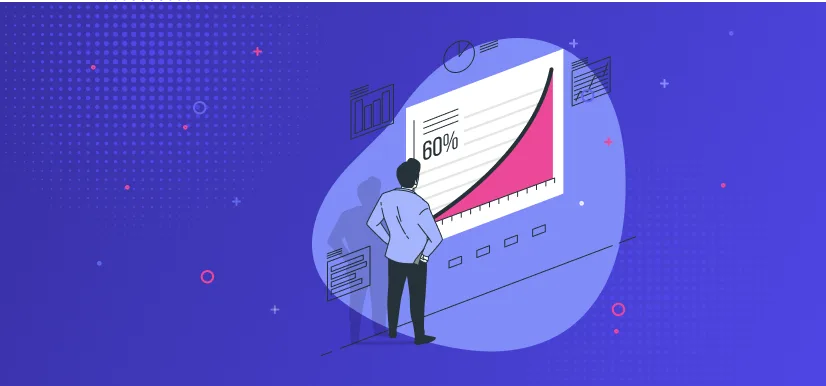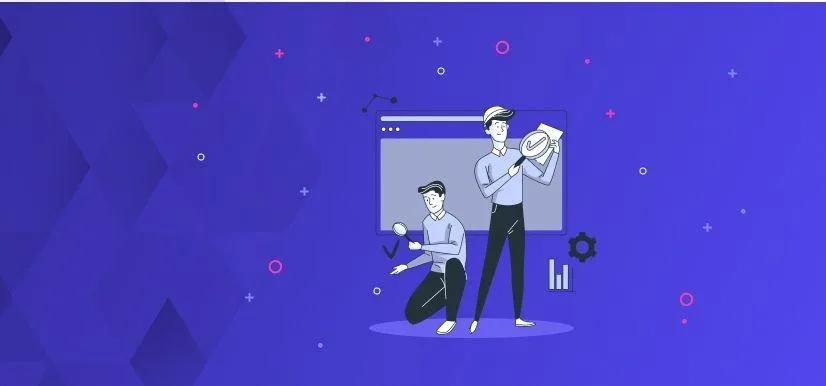- Personalization
Personalization at Scale Examples: Maximize the ROI of Your Content and Data


Personalization isn't just a nice-to-have. It's essential.
With an increasing amount of information available at our fingertips and a rising number of competitors vying for consumer attention, standing out from the crowd has never been more challenging.
Yet, amidst all this competition, one factor remains constant: the limited attention span of consumers.

Image Source
So, how can you capture and retain this fleeting attention?
The answer lies in delivering tailored and relevant experiences to your customers.
However, scaling personalization without overstretching your resources can seem like a daunting task.
Fear not, as in this blog post, we will delve into some real-world examples of personalization at scale. We'll explore how businesses have successfully maximized their content and data ROI, navigating the fine line between personalization and scalability.
Paid Traffic Personalization
Paid traffic personalization serves as one of the most prevalent examples of personalization at scale in today's digital ecosystem.
For sectors like retail and e-commerce, a significant 23.6% of traffic is driven by paid search, while for B2B, this figure stands at 12.3% (source).
But it doesn't stop there.
With the inclusion of display and social ads, it's safe to assert that approximately 30 to 50% of the total traffic is paid traffic.
This underlines the immense potential of personalizing paid traffic to enhance user experience and boost conversion rates. By leveraging data-driven insights, businesses can tailor their advertising efforts to resonate with individual consumer preferences and behaviors, thereby maximizing the ROI of their paid traffic strategies.
Landing Pages/Product Detail Pages
Landing page personalization is a powerful demonstration of paid traffic personalization, particularly in the B2B sector. Very similarly, product detail pages
By personalizing the landing page or product detail page for every paid campaign, marketers can construct dynamic experiences that speaks to every user segment. This means headlines, images, and call to actions can be specifically tailored to align with each individual user's interests.
The result?
An increase in conversion rates, click-through rates, and revenue.
A highly personalized user experience that not only engages the visitor but also significantly increases the likelihood of conversion.
Let’s look at an example from Ruggable, an innovative interior brand known for its patented 2-piece rugs, took personalization to a new level by creating distinct experiences on its website based on paid traffic.
Here is one example how Ruggable is scaling its paid traffic personalization:
Dog-Related Campaigns: Visitors who landed on Ruggable's website via dog-related paid campaigns were greeted with dog-centric content. This could include images of dogs enjoying Ruggable's rugs, testimonials from dog-owning customers, or even a special collection of rugs ideal for households with dogs. This tailored experience resonated strongly with dog owners, making them feel understood and catered to.
Cat-Related Campaigns: Similarly, visitors arriving from cat-related paid campaigns were met with a plethora of cat-related content. This might encompass pictures of cats lounging on Ruggable's rugs, reviews from cat-parent customers, or a curated selection of rugs perfect for feline-friendly homes. This personalized experience appealed to cat owners, reinforcing the brand's understanding of their unique needs.

By matching the ad message to the landing page experience, Ruggable created a seamless journey for their customers:
increase in conversion rates by 25%
click-through rate jumped by more than 7 times
Through this strategy, businesses can ensure they're making the most of their paid traffic, delivering content that resonates deeply with their audience and sets them apart in a crowded digital marketplace.
Location Personalization
Location personalization is a strategic approach in personalization at scale that leverages geographic data to tailor the user experience based on their physical location. This could be as broad as country-specific content, or as granular as city or even neighborhood-level personalization.
The concept is simple but powerful: by understanding where your users are located, you can deliver more relevant content, offers, and experiences. For instance, a brand could offer weather-appropriate clothing suggestions, promote local events, or provide language-specific content.
In a retail context, location personalization could mean highlighting nearby stores or offering location-specific promotions. For an online news platform, it could mean prioritizing local news stories.
Here’s an example from a global FMCG Brand.
Partnering with Ninetailed, the brand has replaced its generic homepage banners, product components, and CTA messages with content personalized to the user's geolocation — based on their states and city, resulting in 100s of personalized variations.
The result?
30% increase in engagement
78% increase in conversion rate
28% increase in customer satisfaction
With location personalization, users are not just more likely to engage, but they're also more inclined to convert.
Account-Based Personalization
ABM personalization is a powerful strategy within the broader context of personalization at scale.
It involves tailoring marketing efforts to specific accounts or segments, as opposed to a one-size-fits-all approach. This level of personalization has been found to significantly boost conversion rates and ROI, as it allows businesses to engage with their target audience in a more meaningful and relevant way.
The potential of ABM personalization is vast, particularly when you consider the granularity of audience segmentation that can be achieved. For instance, a company could create different versions of their homepage for various segments based on factors like:
company size (startup vs. enterprise),
job title (marketing, product, engineering, etc.),
industry (fashion, beauty, apparel, health, food, etc.),
and interest level (new visitor, returning visitor, and engaged visitor).
This level of personalization goes beyond just the content and messaging.
Businesses can also tailor elements like customer logos and case studies on their homepage based on the visitor's location. For example, a North American visitor might see logos of North American customers, while a European visitor sees European customer logos.
This localization adds another layer of relevance and resonance for the visitor.
Dynamic Content Based on User Behavior:
Dynamic content based on user behavior is a key aspect of personalization at scale.
It involves tailoring website content in real-time, based on the actions, preferences, or past behavior of the user. This approach can significantly enhance the user experience and engagement, leading to higher conversion rates.
Here's a breakdown of how each point works in this context:
Personalized Product Recommendations: By analyzing a user's past browsing or purchase history, businesses can provide personalized product suggestions that align with their interests. This not only makes the shopping experience more relevant for the user, but also increases the likelihood of them making a purchase.
Recently Viewed Items or Related Products: Highlighting recently viewed items can remind users of products they were interested in and might still want to buy. Suggesting related products can introduce users to new items that complement their interests, thereby increasing the chances of cross-selling and upselling.
Adjusted Website Navigation Menu: By adapting the website navigation menu based on user preferences or behavior, businesses can make it easier for users to find what they're looking for. This could involve prioritizing categories that the user frequently visits, or showcasing options that are most likely to interest them based on their past behavior.
Prioritized Sections or Categories: Highlighting sections or categories that are relevant to each user can make their browsing experience more engaging and efficient. If a user frequently shops in the 'electronics' category, for instance, prioritizing this section on their homepage can save them time and improve their overall experience.
Start Customer Centric. Start Scaling the Personalized Experiences
Scaling personalized experiences involves a balance of customer-centric focus, continuous optimization, privacy respect, and dynamic adaptation to changing user behavior and trends.
Personalization at scale is all about iterations and continuous optimization. Just as with any marketing strategy, personalization at scale is not a one-and-done process. It requires continuous testing, learning, and refining to ensure the personalized experiences you're delivering are effective and relevant. This may involve A/B testing different personalization features, analyzing user engagement and conversion data, and making adjustments based on these insights.
Respecting user privacy and adhering to data protection regulations. As you collect and analyze data to inform your personalization strategies, it's crucial to respect user privacy and comply with data protection regulations. This means being transparent about how you're using user data, providing options for users to opt-out of data collection, and taking steps to secure user data and prevent unauthorized access.
Regularly analyzing user data and adapting personalization strategies based on evolving trends and user behavior. User preferences and behavior can change over time, so it's important to regularly review and update your personalization strategies. This might involve incorporating new data points, adjusting your segmentation criteria, or updating your content and recommendations based on emerging trends.
By keeping these principles in mind, businesses can deliver personalized experiences at scale that resonate with their audience and drive engagement and conversions.
Get in touch to learn how Ninetailed personalization, experimentation, and insights works inside your CMS

